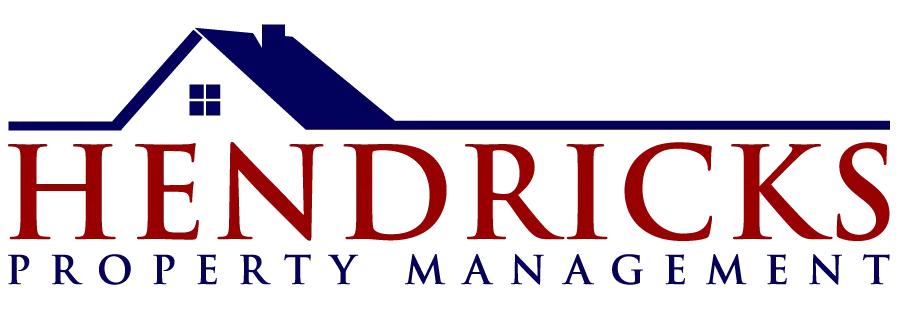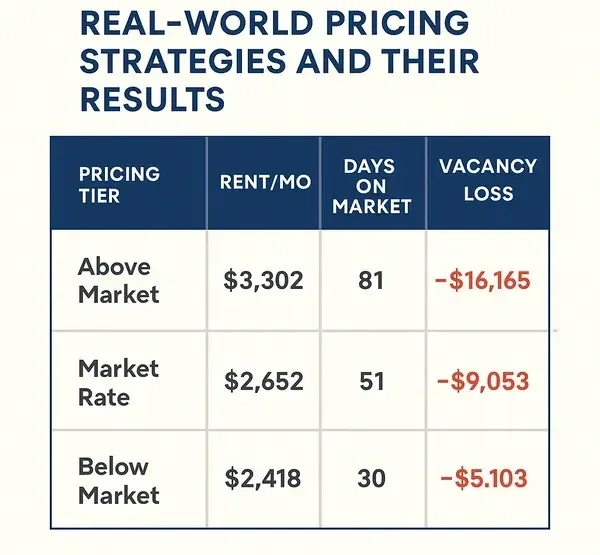How to Determine Rental Price and Avoid Costly Vacancy
Not sure how to determine rental price for your property? You’re not the only one, and setting the wrong number could end up costing you more than you’d expect.
Table of Contents
If the rent is too high, your place might sit empty. If it’s too low, you could make less than you should. With more tenants shopping around and inventory increasing in many markets, smart pricing strategies matter now more than ever.
This guide breaks down everything you need to know from understanding market rate, analyzing local rental rates, and avoiding costly missteps that cause long vacancies.
1. How to Determine Rental Price in 2025’s Market
To find the right rent, start by looking at what similar homes nearby are charging. Key factors include:
Square footage
Number of beds and baths
Neighborhood/Zip code
Amenities (garage, yard, upgrades)
School district and convenience.
Use platforms like MLS, Zillow, Rentometer, and Apartments.com to benchmark rates in your area. But pricing is more than just comparison shopping.
You need to:
Check current days on market for similar listings.
Review rental trends from the past 6-12 months.
Consider seasonal demand (summer leases move faster).
Use this tool to calculate what your vacancy could cost you.
2. The Hidden Cost of Vacancy
Every day your property sits empty, you lose money. Even if your asking rent is $100 more than your neighbors’s, a few extra weeks vacant cancels out that gain fast.
Let’s say you list your home for $2800/month. If it takes 60 days to rent, you lose nearly $5,600 in vacancy. On the flip side, listing at $2600/month and leasing it in 30 days nets more income even at a lower rate.
Key point: Rent less and lease faster often outperforms rent more and lease slower. That’s the core of a smart rental pricing strategy.
3. Real-World Pricing Strategies and Their Results
Here’s a breakdown of three pricing strategies from actual San Antonio listings (Stone Oak area, September 2025).
| Pricing Tier | Rent/Month | Days on Market | Vacancy Loss |
|---|---|---|---|
| Above Market | $3,302 | 81 | –$16,165 |
| Market Rate | $2,652 | 51 | –$9,053 |
| Below Market | $2,418 | 30 | –$5,103 |
What does this tell us?
Pricing just 5%-10% below market rate can reduce vacancy by 2-3 weeks and save thousands in lost rent.
4. Market Rate vs. Value Pricing and How to Determine Rental Price
Market rate is what similar properties are currently leasing for, not just what they’re listed at. But, renters are shopping for price AND value.
Value pricing looks like this:
Offering more space or upgrades at the same price as competitors.
Listing slightly under market to attract high demand.
Reducing rent weekly ($25-$50) until the unit leases.
Small adjustments create momentum: more showings, more applicants, and faster leases.
5. When to Price Below Market and Why It Works
Landlords often fear leaving money on the table. But, holding out for an extra $100/month can mean an extra month or two of vacancy. That adds up fast.
You might consider pricing below market if:
You’re listing during the slow season (fall/winter).
Your property has been on the market for 30+ days.
Your have strong competition in the neighborhood.
Real-world insight:
A home listed $75 under market had three good applicants in one week. Another, priced higher, didn’t rent for over 45 days.
6. How Local Rental Rates Influence Tenant Behavior
Today’s renters are savvy. They use listing platforms daily and often tour multiple properties in a week. They know when a rental is priced too high and they skip it.
What renters notice:
Price per square foot
Overall value compared to others
Discounts or lease perks (free month of rent, flexible lease terms)
A $50-$100 difference in monthly rent can drastically affect the number of leads you get. Tenants are more likely to tour properties they see as deals even if it’s just a small amount.
7. Tools and Resources to Set the Right Rent
Before you list your rental, use these tools:
Vacancy Cost Calculator- Understand the financial impact of slow leasing.
Zillow Rent Estimate- Compare active comps and market trends
Rentometer- Check historial rental data in your area
Hendricks Property Management Market Reports- Local data and trends insights.
8. What Happens If You Price Too High
Pricing too high delays leasing and sends a signal that the property is overpriced or not worth the money.
Common risks:
Extended vacancy (every day = lost revenue)
Reduced urgency from tenants
The need for large price drops later
Property becomes “stale on listing sites
9. Creative Lease Options to Reduce Vacancy
Landlords with flexibility can reduce vacancy by offering lease terms that match tenant demand:
Options that work:
Short-term leases (6-9 months): Good for relocation clients or students
Longer leases (18-24 months): Provide stability and predictable cash flow
Flexible move-in dates: Attract tenants who need immediate housing
HCV program participation: Guaranteed rent and longer tenancy
Each strategy aligns with tenant needs and reduces your vacancy risk.
10. How Hendricks Property Management Helps Landlords
At Hendricks Property Management, we help lanlords:
Set rent using real-time market data
Avoid overpricing mistakes
Fill vacancies faster
Screen tenants thoroughly
Handle rent collection, maintenance, and accounting
Structure leases to maximize long-term ROI.
Our clients regularly lease faster and with fewer issues by applying data-backed decision.
11. Common Questions Landlords Ask
“Why is no one applying for rental?” Usually, it’s priced too high for the current demand.
“Can you help me with how to determine rental price?” Yes, start by checking local comps, use tools like the Vacancy Cost Calculator, and factor in property condition and season.
“Should I offer a discount if it’s been on the market too long?” Yes, small weekly rent drops can boost visibility and interest.
“Why isn’t anyone scheduling showings for my rental?” It’s almost always price, especially if the unit looks great.
12. What Factors Can Skew Rental Pricing?
Even if you’ve done your homework and compared local rental rates, some properties still sit longer than others. That’s usually because of hidden pricing variables that don’t show up on basic comps search.
Here are a few often-overlooked factors that can skew your pricing strategy:
Property Condition
If your rental looks worn or needs work, renters will expect to pay less, even if it’s the same size and in the same area. Trying to charge the same rent as a newly updated home usually doesn’t work.
Curb Appeal and First Impressions
Photos matter. Properties with poor lighting, unclear room layouts, or dark, grainy photos will generate fewer clicks and showings. A strong listing needs professional photos, a clear description, and accurate square footage and amenity details. Even the best pricing strategy can’t overcome poor presentation.
Seasons
In San Antonio and similar markets, demand peaks in spring and early summer. If you’re listing in October through February, you’ll likely face fewer renters and longer days on market. In slower months, listing the rent a little under market can help keep your place filled.
13. Repricing: When and How to Adjust
Sometimes a rental sits longer than expected despite decent photos and good amenities. If your unit hasn’t leased after 2-3 weeks with few or no showings, it’s time to adjust.
Here’s how to approach repricing without starting from scratch:
Drop rent by $25-$50/week until interest picks up
Re-list with updated photos or headline to refresh interest
You can offer the first month free if the tenant signs a longer lease.
Small updates like this can help your listing show up more and get more attention. If you don’t lower the rent, you might lose money while still paying the mortgage and other bills.
14. The Role of Professional Management in Rental Pricing
A property manager doesn’t just collect rent. They are your local pricing analyst, leasing strategist, and legal safety net. Hendricks Property Management uses real leasing data from our own rentals, not just public listings, to help set the right price.
We also advise owners on things like:
When to reduce rent and by how much
What upgrades will justify a higher rent
How to structure lease terms around local demand
When to offer incentives vs discounts
By staying hands-on throughout the leasing process, we help landlords maximize long-term returns. That’s the difference between reacting and planning ahead.
15. Final Thoughts: Price Smarter, Lease Faster
Rental pricing isn’t a set-it-and-forgot-it decision. Rent prices change depending on the market, what renters are looking for, and the shape your property is in.
If you’re wondering how to determine rental price, don’t go it alone. Use online tools, look at other rentals in your area, and if you’re not sure, work with a company like Hendricks Property Management that knows your market.
The right price gets your property leased. The wrong price costs you thousands.
FAQ
-
Use the Vacancy Cost Calculator to estimate based on your rent and how long it’s been empty.
-
Yes, even $50-$100 off market rate can cut your vacancy significantly.
-
In most cases, faster leasing leads to high total income even with lower rent.
-
HPM uses current rental data to help you choose the right price so your property rents faster and earns more.
Ready to Price Your Rental the Right Way?
Don’t leave money on the table by guessing how to determine rental price.. Hendricks Property Management can help you set the right rent, find qualified tenants, and keep your property earning.


